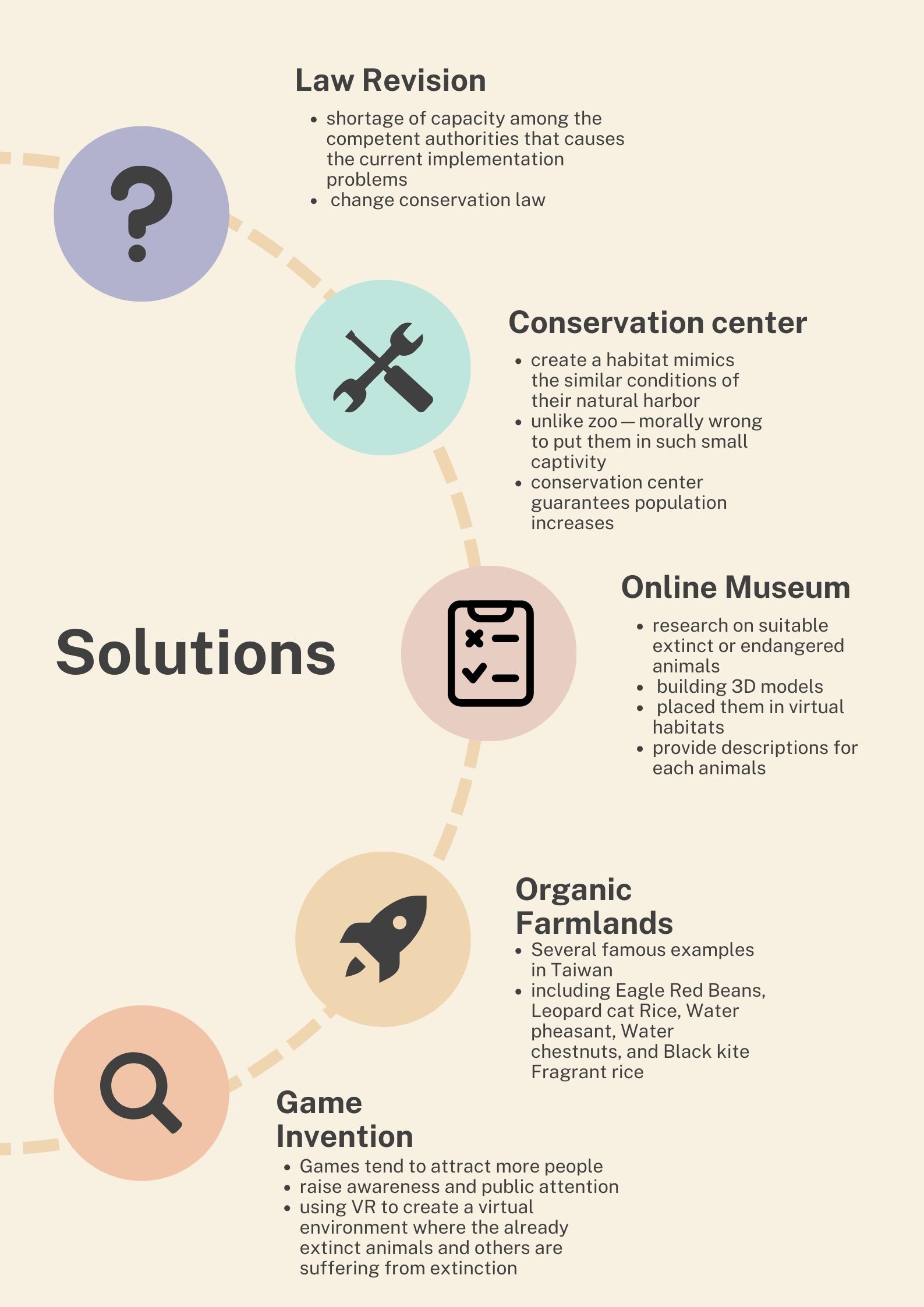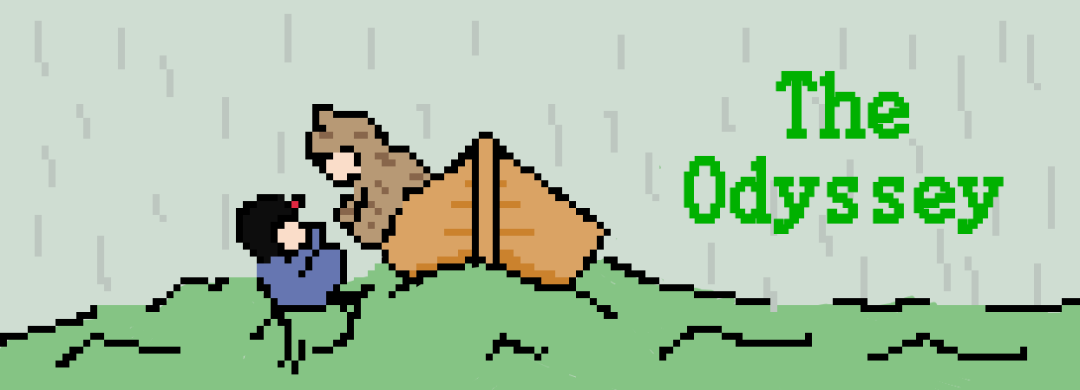 (1).png)
OK. So our task this week is to get some ideas of how to solve the problem. Be creative! Go on and daydream! We need your ideas~ 😌
Here’s mine. Take a look~~
Create 3D Museum
Nowadays, people have started to care about the issue of animal extinction. Some animals have already extinct, while some animals are now endangered. For those that are extinct, younger people or future generations might not know their past existence; for those that are endangered, people need to start taking action, people need to protect them.
Inspired by the travel to the Natural History Museum in London, which displays a variety of remains, animal bones, specimens, and animal models, I have an idea to create an online museum for extinct and endangered animals. It will be like a collection. However, we will not start making the 3D model immediately. We need first do some research about each of the animals that we want to put in the online museum, either their habitats or their actual appearances. After clearly distinguishing all the differences and specialties, we can start building models for extinction animals. We do not tend to build extremely detailed three-dimensional models or make models that look the same as the actual animal. Instead, we will display all the specialties on the model to make all ages, from children to the elderly, able to notice these extinct or endangered animals easily. Next, the animal models will be placed in the habitat that they originally belonged to. Lastly, the same as what museums all do, we will provide descriptions for all animals that are displayed. The descriptions will contain pieces of information regarding their basic introduction, their current situation, and the causes of the endangered or extinction. This way audiences will be able to not only get to know these animals but also acknowledge the conditions they are facing.
Through this process, we hope and assume that more people will be able to keep an eye on this topic and start to take some action for the animals, for the environment.
 - julie.png)
Conservation Center
This proposal below is creating a solution for endangered animals within the conservation center. The conservation center mimics the similar conditions of their natural harbor. Not just persevering those species, but allowing them to flourish their furniture generation.
However, there exists a significant challenge to establish the conservation center. Typically zoo is far to be considered an alternative for animal conservation. The argument for conservation centers not being able to provide animals enough space. People claim that zoos will limit animal’s living areas and destroy their inborn abilities. It is morally wrong to put animals in such small captivity. According to Our Endangered World, zoos keep animals for public display and entertainment. Moreover, it limits animals’ social interaction.
Therefore, we should have a system that can help animals be competitive while they are in a conservation center which guarantees a population increase of future generations. It will simulate the animal’s predator attacking them. Through this process, it could achieve the goal of not leaving them in a limited area for their whole life and also raise the opportunity for their survival. The main goals of this plan are to raise the endangered population and, at the same time, keep them competitive in their ecology.
To sum up, with the method mentioned above, saving endangered animals can be a workable project. Keeping animals in an area that can protect them and provide a comfortable environment that can flourish, therefore, enlarging their population. Hence, people might argue that conservation centers will kill or destroy animal’s survival instinct. So to prevent their concern from turning into a fact, having a system that mimics their predator’s action, will raise their chance of survival when they are back to their original environment. This plan is not trying to keep those endangered animals in a greenhouse so that they can live happily. The intention of this is to ensure their population is in a safe area, same time keeping their inborn ability. After years, it will be truly possible for them to go back to where they used to survive and continue to pass down the generation.
 (1).png)
I think I’ll need them by tmr before the meeting!!
Oh but still send it here before the meeting plz ^^
 - cami.png)
VR Game
Why? Games tend to attract more people. Some might think that people wouldn't pay attention to what the game is trying to tell, but if we make it an experience activity using VR, letting people try to view from the sight of the endangered animal or view from beside how their daily lives are going, it could help a lot. Making touching videos is another way. Move people from inside their hearts.
I am well aware that although the issue of animal extinction has been spread widely, some people just don’t care about it, or they do care, but that is not enough. It’s likely because it feels so far from us, and I can understand that. There are so many different ideas that are good and are working now. I also thought of one that I believe would help make a difference regarding this issue.
It might seem a little pie-in-the-sky, but it could affect society. Since there is a chance that people are not aware enough, I thought of a way that can give them some motivation to start caring about this issue. Games gave me the idea of this entire brainstorming. Many people love playing games, and they tend to attract more people. Some might argue that people wouldn’t pay attention to what the game’s message is, but if we make it an experience activity using VR, I think that would lead us to a different conclusion.
By using VR, we can create a virtual environment where the already extinct animals and others are suffering from extinction. Making it a little adventure with those animals, can allow customers to walk around with them, and understand what danger they had to face, how they got their food, and of course what’s going on during their daily lives. To make it closer to reality, the VR experience will also include day and night changes, temperature changes, and so on. Our goal is to let the customers be deeply affected by what they had experienced or saw during the VR. I am sure that making things that were usually documented in the books come alive can give people a profound memory of those animals.
 - sry.png)
Website for Animal-friendly Products
Animal’s habitat is something directly affecting their survival. Human activities such as exploiting lands and turning them into farmlands or fish farms are forcing animals out of their original habitat, which eventually leads to their extinction. In addition, most farmlands use pesticides or chemical fertilizers because they’re cheap and could increase their harvest. These toxic chemicals end up flowing into water affecting more land and killing more animals.
The government has become more and more aware of this situation and made laws to promote these organic farmlands. However, the progress is slow because transitioning from conventional to organic farming can lead to reduced yields initially, discouraging farmers. Organic certification adds extra costs, including certification and inspection fees. Contamination from neighboring fields is a concern. Strict standards limit the use of certain materials and impose heavy metal content restrictions. Organic products have higher production costs and limited marketing avenues, impacting production growth.
These can be easily resolved by the support of customers. Now, there are several famous organic farmlands in Taiwan, including Eagle Red beans, Leopard cat Rice, Water pheasant, Water chestnuts, and Black kite Fragrant rice. These are the animals and the kind of farmland they coexist with, and these are great examples to prove that organic farmlands are achievable. However, there are many more than just these four types of organic farmlands in Taiwan, but most are unknown to customers. Most people in Taiwan are supportive of environmentally friendly products. Thus, promotion and exposure are what these farmlands need.
By building a website where we put all the products of organic farmlands, we can ensure customers know all the animal-friendly products. In addition, we can put stories behind these products, such as how they coexist with animals. Last, we can hold experiment camps on the farmlands to let the customers know more about the origin of the product and feel more involved in the process of protecting the environment protecting environment and the animals.
Promotion of Laws
In light of our inadequacy as a group of teenagers in influencing the entire community as well as the entire country, I am seeking your kind support for launching petitions to address the uprising extinction of wildlife in Taiwan. I believe that promoting law revision would be the most compelling and authoritative way to change things.
There are two main legal sources regulating animal protection and conservation in Taiwan: the Animal Protection Law and the Wildlife Conservation Law. While there are some similarities between the two, there are also differences between them.
A revision to the law currently under review has two blind spots: 1. Misconceptions about wild and non-wild animals, 2. Mistaking animal protection for wildlife conservation.
There is a serious shortage of capacity among the competent authorities that causes the current implementation problems. The competent authority for wildlife is the Forest Service, but wildlife problems are widespread \across Taiwan and are of many types, including hunting, harm, conservation of endangered species, import and export of wild animals, etc., which far exceed the Forest Service's resources.
At the time of the enactment of the Wildlife Conservation Law and the Legislative Yuan Gazette(立法院公報), wild animals were clearly defined. It must be noted, however, that when applying the law, the competent authorities deviated from the possible scope of legal interpretation and made decisions that went beyond the legal provisions for reasons of administrative expediency. Accordingly, matters that should be handled under the Wildlife Conservation Law are changed to be handled under the Animal Protection Law, and matters that should be handled under the Animal Protection Law are changed to be handled under the Wildlife Conservation Law.
 - julie.png)
 - tiger.png)

 - van.png)
 - mel.png)
 - awesome.png)

 - arrow.png)
 - phone.png)
 - magnify.png)
 - three lines.png)
